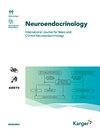肠道微生物、血液代谢物与神经内分泌肿瘤之间的因果关系:介导孟德尔随机化研究》。
IF 2.8
2区 医学
Q2 ENDOCRINOLOGY & METABOLISM
引用次数: 0
摘要
引言 神经内分泌肿瘤(NET)是一类起源于不同解剖部位的异质性上皮性肿瘤,确定NET发病所涉及的肠道微生物群和代谢机制有助于制定适当的疾病预防和监测策略。方法 我们采用了介导双样本孟德尔随机化(MR)方法,分析了德国研究中的肠道微生物群和第 10 轮芬兰基因项目中的 NET 数据集。利用加拿大老龄化纵向研究(CLSA)和英国双胞胎研究的代谢物数据集进行了中介分析。工具变量(IV)根据既定的 MR 标准选择,并使用 Wald ratio、逆方差加权(IVW)、MR-Egger 和加权中位数方法进行分析。为确保稳健性,使用 Cochrane 的 Q 值、Egger 的截距、MR-PRESSO 和留一法(LOO)进行了敏感性分析。结果 确定了 6、5、2、1、2、3 种肠道微生物的遗传决定因素与结直肠癌、肺癌、胰腺癌、直肠癌、小肠癌和胃癌 NET 风险之间的因果关系。同样,4、6、1、5、10 和 7 种代谢物的遗传决定因素也分别与结直肠癌、肺癌、胰腺癌、直肠癌、小肠癌和胃癌 NET 的风险存在因果关系。通过 Wald ratio 和 IVW 方法,我们初步确定了 957 对具有显著因果关系的微生物群-代谢物配对,并形成了 13 种肠道微生物对 NETs 影响的中介关系。结论 我们的研究表明,肠道微生物群及其衍生代谢物可能是导致 NET 发病的原因之一,为了解该疾病的发病机制提供了新的视角。本文章由计算机程序翻译,如有差异,请以英文原文为准。
Causal Relationships between Gut Microbiotas, Blood Metabolites, and Neuroendocrine Tumors: A Mediated Mendelian Randomization Study.
Introduction Neuroendocrine tumors (NETs) are a heterogeneous group of epithelial tumors originating from different anatomical sites, identifying the gut microbiota and metabolic mechanisms involved in the onset of NETs may help to develop appropriate disease prevention and monitoring strategies. Methods We employed a mediated two-sample Mendelian Randomization (MR) approach, analyzing gut microbiota from German studies and NET datasets from the 10th round of the FinnGen project. Mediation analyses were conducted using the metabolites dataset from the Canadian Longitudinal Study of Aging (CLSA) and the TwinsUK study. Instrumental variables (IVs) chosen according to established MR criteria and analyzed using the Wald ratio, inverse-variance weighted (IVW), MR-Egger, and weighted median methods. To ensure robustness, sensitivity analyses were performed using Cochrane's Q, Egger's intercept, MR-PRESSO, and leave-one-out (LOO) methods. Results Causal relationships were identified between the genetic determinants of 6, 5, 2, 1, 2, 3 gut microbiotas and the risk of colorectal, lung, pancreatic, rectum, small intestine and stomach NETs. Similarly, the genetic determinants of 4, 6, 1, 5, 10 and 7 metabolites were found to be causally related to the risk of colorectal, lung, pancreatic, rectum, small intestine and stomach NETs, respectively. Through Wald ratio and IVW methods, we preliminarily identified 957 microbiota-metabolite pairs with significant causal associations, and formed 13 mediated relationships between the impact of gut microbiotas on NETs. Conclusion Our study suggests that gut microbiotas and its derived metabolites may contribute to the onset of NET, offering a novel insight into the disease's pathogenesis.
求助全文
通过发布文献求助,成功后即可免费获取论文全文。
去求助
来源期刊

Neuroendocrinology
医学-内分泌学与代谢
CiteScore
8.30
自引率
2.40%
发文量
50
审稿时长
6-12 weeks
期刊介绍:
''Neuroendocrinology'' publishes papers reporting original research in basic and clinical neuroendocrinology. The journal explores the complex interactions between neuronal networks and endocrine glands (in some instances also immunecells) in both central and peripheral nervous systems. Original contributions cover all aspects of the field, from molecular and cellular neuroendocrinology, physiology, pharmacology, and the neuroanatomy of neuroendocrine systems to neuroendocrine correlates of behaviour, clinical neuroendocrinology and neuroendocrine cancers. Readers also benefit from reviews by noted experts, which highlight especially active areas of current research, and special focus editions of topical interest.
 求助内容:
求助内容: 应助结果提醒方式:
应助结果提醒方式:


